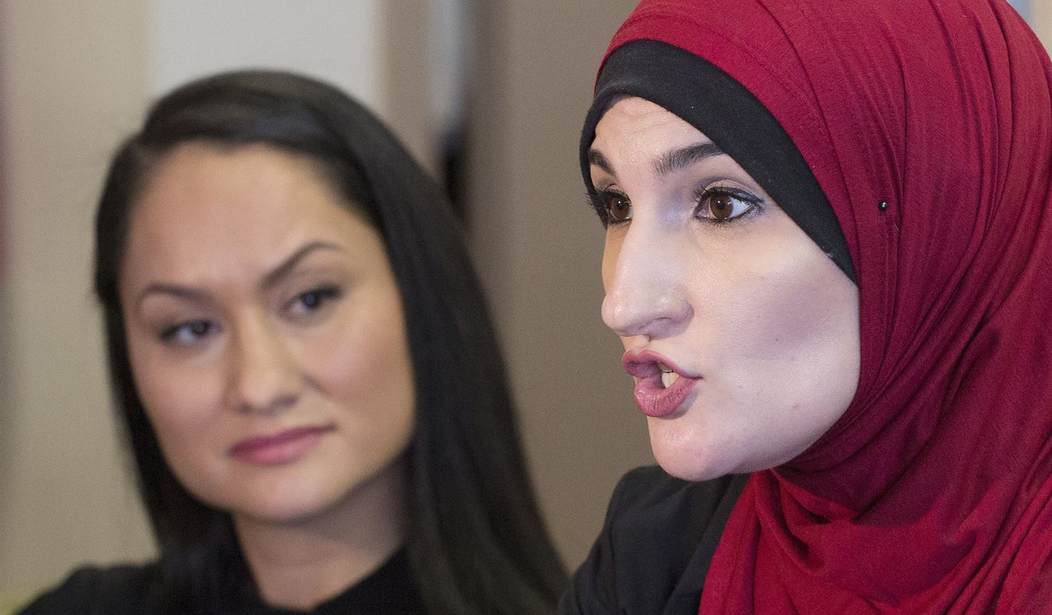Trump Derangement Syndrome may have reached a new high — more accurately, low — on September 18th, 2022, when the New York Times printed an article blasting Russian trolls and disinformation for pushing the idea that Linda Sarsour was antisemitic. No, seriously.
It singled out an element of the Women’s March that might, at first, have seemed like a detail: Among its four co-chairs was Ms. Sarsour, a Palestinian American activist whose hijab marked her as an observant Muslim.
Over the 18 months that followed, Russia’s troll factories and its military intelligence service put a sustained effort into discrediting the movement by circulating damning, often fabricated narratives around Ms. Sarsour, whose activism made her a lightning rod for Mr. Trump’s base and also for some of his most ardent opposition.
One might think it was Sarsour herself who was responsible for the belief she was antisemitic based on her own words and associations with individuals such as Louis Farrakhan. Obviously, this is not so. It’s all because Sarsour wears a hijab. And Trump, of course.
Linda Sarsour awoke on Jan. 23, 2017, logged onto the internet, and felt sick.
The weekend before, she had stood in Washington at the head of the Women’s March, a mobilization against President Donald J. Trump that surpassed all expectations. Crowds had begun forming before dawn, and by the time she climbed up onto the stage, they extended farther than the eye could see.
More than four million people around the United States had taken part, experts later estimated, placing it among the largest single-day protests in the nation’s history.
One can hear the protagonist in most every Scooby Doo cartoon crying out that he would have gotten away with it were it not for that meddling #OrangeManBad … er, meddling Russians. How do these people get through the day without their minimum TDS requirement? But I digress.
Given how, during the 2020 campaign, the Biden camp first distanced itself from, then immediately pivoted toward apologizing to, Sarsour, it comes as no surprise that the NYT would attempt playing the RussiaRussiaRussia card in an effort to at least partially rehabilitate her. That, and the Times’ own antisemitic problems.
Freelance journalist John-Paul Pagano described Sarsour’s problem — or, perhaps more accurately said, the problem with Sarsour — in a 2018 story for The Atlantic.
A year ago, the Women’s March punctuated Trump’s inauguration with what was likely the largest single-day mass demonstration in American history. Today, it finds itself embroiled in an unexpected controversy after the initial refusal of several of its leaders to distance themselves from one of America’s leading anti-Semites, the Nation of Islam’s Louis Farrakhan. It’s a conflict that stems from the long, entangled history between black and Jewish communities in the United States, in which friendship and friction are giving way to struggle over the dimensions of peoplehood. It also reveals anti-Semitism as a crucial blind spot of contemporary left-wing activism.
By skimming over Sarsour’s antisemitic words and actions while portraying her as a victim, the NYT’s Ruth Fremson does a tremendous disservice to all parties involved. Except for Sarsour. Is hating Trump such necessary lifeblood for these political vampires they must go to any lengths and polish anyone’s public image who is ostensibly on their side? The answer is yes.
Linda Sarsour is undeserving of anything save exposing the truth about her as framed by her unfiltered, unaltered, unedited words. No amount of whataboutism or blame-shifting can hide the fact she alone is responsible for her pariah status. But hey, nice try, Times.














Join the conversation as a VIP Member